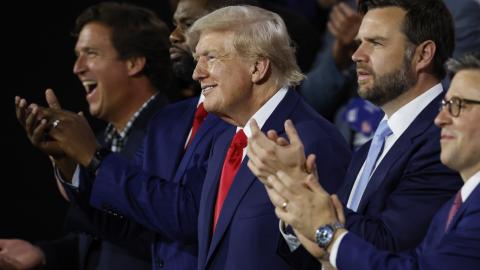So now we know. The U.S. economy created 248,000 non-farm jobs in May; OPEC decided to increase output only slightly; consumers reined in their spending a bit despite the better jobs market, perhaps because the value of their homes increased a mere 1% in the first quarter; and The Economist says that the drop in house prices in Australia shows that it doesnt take a rise in interest rates to blow the froth off the housing market.
Plenty of grist for Federal Reserve Board Chairman Alan Greenspans mill, as he decides what to do about interest rates. Start with oil prices. Wal-Mart says that higher gasoline prices are taking about $7 per week out of the pockets of its customers. So OPECs decision to step up output should come as good news to Americas retailers. Well, no. For one thing, the agreed increase in quotas500,000 barrels per dayis too trivial to matter. For another, only Saudi Arabia has enough spare producing capacity to add very much to world supplies of crude oil. But its high-sulfur oil is not very suitable for use in Americas refineries, and will take at least six weeks to reach the U.S. Finally, the main driver of gasoline prices is a shortage of refining capacity, which has doubled the margin between crude oil prices and gasoline prices. That cant be fixed quickly.
Besides, nothing the OPEC cartel can do will ease concerns about the security of the Saudi Kingdoms oil facilities or the long-run viability of its royal family. Estimates vary, but experts are guessing that this uncertainty, plus the general case of nerves produced by events in Iraq, is adding somewhere between $5 and $10 to the price of crude. The Saudi oil minister sought to ease concerns by telling the press, I tell you I am confident that facilities in Saudi Arabia are very, very secure and they are protected very strongly to prevent anything happening to them. The markets arent persuaded. After all, Saudi Arabia gave the world bin Laden, most of the highjackers who destroyed the World Trade Center, and the fanatical creed adopted by the worlds terrorists. Not exactly a prescription for stability.
Still, the U.S. economy continues to grow. In May the manufacturing sector grew for the 12th consecutive month, and at its fastest rate since the early1970s. Auto makers, more nervous than most about the effect of rising oil prices, saw sales grow by 3.4% in May, spurred in part by sales incentivesread: price cutsthat averaged almost $4,000 per vehicle. As if to prove that gasoline prices are of little concern, consumers snapped up trucks and full-size sports utility vehicles (SUVs), shunning only the gigantic Hummers so beloved of California Governator Arnold Schwarzeneggerhe owns seven. Whether this behavior is based on a powerful preference for big, safe vehicles, or on the assumption that we are witnessing merely a temporary oil price spike no one knows.
What Greenspan has to consider is this. America consumes about 20 million barrels of oil every day. A $10 increase in price comes to $75 billion, or 0.7% of GDP. But 40% of the oil used in the U.S. is produced domestically, so $30 billion is a transfer from American consumers to Americas oil-industry investors. All in all, the best guess is that high oil prices mightonly, mightknock 0.4% off U.S. economic growth.
But there is a counterforce in the jobs market. Not only were 248,000 jobs added in May, but the estimates of total job growth in March and April were revised upward by 74,000. In the past three months the economy has added 947,000 jobs. That probably lightened President Bushs spirits during the recent dreary days of meetings with French President Jacques Chirac.
Most experts consider it unlikely that the economy will grow this quarter at the 4.4% rate it logged in the first quarter of the year. Economists at Goldman Sachs are forecasting a slight loss of momentum in the second quarter. Among other things, they expect higher mortgage rates to dampen home sales. But executives in the housing industry say that unless rates hit 8%, sales will remain robust. And mortgage rates in the 8% range are not deemed very likely.
So Greenspan has to consider that high oil prices may be a drag on economic growth, or worse. Oil price spikes preceded four of the last five recessions. That would dictate holding off on interest rate increases, or keeping such increases quite moderate. On the other hand, the rapid growth in jobs, and the unexpectedly large increase in average hourly wages in May, might suggest to the Feds monetary policy committee that a series of increases is indicated.
My own guess is that Greenspan will be unperturbed by the more rapid growth in jobs. He has always viewed the labor market as a globalized entity, with a large supply of workers available to be drawn in if wage rises threaten to drive up costs and prices. He also will know that the effect of higher oil prices will last only so long as it takes the extraordinarily flexible American economy to adjust its capital stock and work habits. So dont look for any panic on the part of the Fed.
Unless, of course, the flow of oil from Saudi Arabia is seriously interrupted or, worse still, control of the worlds largest pool of reserves passes into the hands of a regime more interested in bringing Western economies down than in providing jobs for the millions of unemployed Saudi young men, and opportunities for the nations repressed women. If that happens, it will take military, not monetary policy, to keep the U.S. economy growing.



















